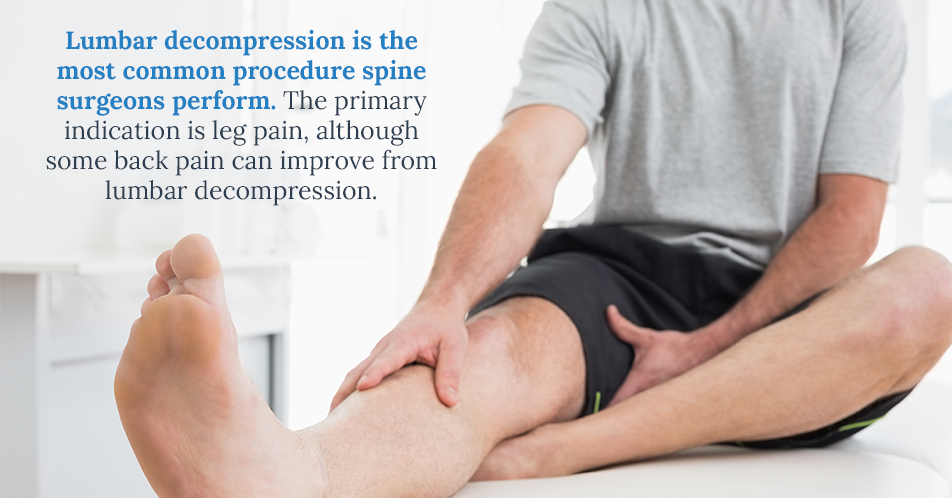Low back surgery refers to surgery on the lumbar spine between the L1 bone and the L5-S1 level. Decompression, fusion and artificial disc replacement are all options to treat low back conditions. However, it is important to remember that these surgeries are not interchangeable, but instead have very specific indications. Depending on your symptoms and changes in your spine, the surgeons at Rocky Mountain Brain & Spine Institute can determine which surgery is best for you.
Lumbar Decompression Surgery
Lumbar decompression is the most common procedure spine surgeons perform. The primary indication is leg pain, although some back pain can improve from lumbar decompression. This type of pain is commonly called radiculopathy or sciatica. When discs bulge or herniate, the facet joints overgrow (hypertrophy), and ligaments overgrow (hypertrophy) which causes pressure on the nerves resulting in pain down the leg or even weakness and/or numbness. These conditions can be referred to as spinal stenosis, disc herniations, disc bulges or spondylosis.
The surgery involves removing bone and possibly part of the facet joint or disc to take pressure off the nerves; this is called laminectomy, laminotomy or microdiscectomy. No screws or rods are placed. This often does an excellent job of decompressing the nerves and resolving the leg pain and deficits. The range of motion is completely preserved.

In extreme cases, severe pressure on the nerves can cause back pain. In these circumstances, decompression can relieve back pain. However, back pain often does not respond well to decompression alone.
Lumbar Fusion Surgery
The primary indication for lumbar fusion surgery is back pain (often also associated with leg pain and weakness/numbness) in the setting of abnormal motion in the lumbar spine as well as severe hypertrophy of the facet joints or severe degeneration of the discs. The spine consists of bones (vertebral bodies) separated by discs. The discs should allow the bones to flex and extend as well as side-bend and rotate. However, the discs should not allow the bones to “slip” or “slide” over one another. This is called spondylolisthesis or spondylolysis. Severe degeneration of the facet joints and disc spaces without abnormal motion can also respond to this type of procedure.
The surgery involves removing bone compressing the nerves but also requires removing the entire facet joint and most of the disc. A plastic or metal spacer replaces the removed disc and rods, and screws stabilize the spine while the two bones grow together. Under the proper indication, this procedure often improves the back and leg pain as well as weakness and numbness. Depending on how many levels are fused, range of motion may diminish.
Lumbar Artificial Disc Replacement Surgery
The primary indication for lumbar artificial disc surgery is still being defined. According to ongoing research, the indication is back or leg pain in the setting of a fairly normal disc and facet joints, but includes a disc herniation. Therefore, most patients who are candidates for a lumbar artificial disc are also good candidates for a lumbar decompression procedure, which is far less invasive. For this reason, there are very few patients who are great candidates for a lumbar artificial disc. This is unlike cervical artificial discs which are much more commonly performed because cervical posterior decompression has many disadvantages.
Tired of experiencing chronic back pain? Contact us at Rocky Mountain Brain & Spine Institute to learn how we can help relieve your pain.







